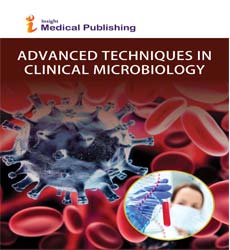Zika Virus Basic and Clinical Aspects, Influncing Factors
Introduction
Zika virus (ZIKV) is an arbovirus previously believed to cause only a mild and self-limiting illness. Recently, it has emerged as a new public health threat that caused a large outbreak in French Polynesia in 2013–2014 and since 2015 an explosive outbreak in Brazil, with an increase in severe congenital malformations (microcephaly) and neurological complications, mainly Guillain Barrue syndrome (GBS). Since then, it has spread through the Americas. On 1 February 2016, the WHO declared the ZIKV epidemic in Brazil a Public Health Emergency of International Concern. We reviewed the epidemiology of ZIKV infection, clinical presentations and diagnosis. We highlighted the clinical features and nonvector borne transmission of the virus. Few studies related to Zika virus (ZIKV) have been published up until 2014. A literature production increase was observed following the French Polynesia outbreak in 2013-2014. But it was only after the explosive ZIKV outbreak in Brazil in 2015 where an increase in reported cases of microcephaly and neurological disorders occurred that several case reports, editorials, letters, research reports, perspectives and reviews were published, impacting the global scientific production in the field. This review describes the current epidemiology of ZIKV infections, clinical presentations and diagnosis. We highlighted the clinical features and nonvector borne transmission of the virus. Numerous studies have assessed the rates of de-escalation therapy (range from 10 to 60%) in patients with severe sepsis or ventilator-associated pneumonia as well as the factors associated with de-escalation. De-escalation generally refers to a reduction in the spectrum of administered antibiotics through the discontinuation of antibiotics or switching to an agent with a narrower spectrum. Diverse studies have identified the adequacy of initial therapy as a factor independently associated with de-escalation. Negative impact on different outcome measures has not been reported in the observational studies. Two randomized clinical trials have evaluated this strategy in patients with ventilatorassociated pneumonia or severe sepsis. These trials alert us about the possibility that this strategy may be linked to a higher rate of reinfections but without an impact on mortality [1]. A small experimental study among adults challenged with Giardia revealed that establishment of infection was dose dependent and shedding was self-limited in 85% of individuals, but 15% of individuals developed chronic shedding [2]. The mean duration of infection in spontaneously cured cases was almost 3 weeks. It is rational to treat giardiasis both in endemic and nonendemic areas, to prevent complications, chronic disease and spread of the infection.
The first-line treatment of giardiasis is the 5-nitroimidazoles, but there are reports of high incidence of nitroimidazole refractory cases of giardiasis. Although antimicrobial resistance is an increasing problem in giardiasis, in-vitro susceptibility testing methods to help clinicians guide targeted treatment is not available. This review provide an overview of clinical studies of anti-Giardia treatment and suggest choice of treatment in refractory cases, and discuss potential mechanisms and molecular targets for future in-vitro testing of drug resistance [2].
Albendazole and mebendazole are widely used antihelminthic drugs, but treatment efficacy in giardiasis is variable. The benzimidazoles exert their function by binding to, and preventing microtubule transport and assembly, and may also induce oxidative stress in the parasite [3]. Albendazole 400 mg in adults, and 10 mg/kg in children, single dose for 5 days, show 83-96% efficacy, while shorter duration is less effective. Efficacy for mebendazole vary greatly (14-95%), both for single-dose treatment and for dosage 200 mg tid up to 7 days. Benzimidazoles are usually well tolerated; reported side effects are nausea, vomiting, diarrhea and abdominal pain.
References
1 Garnacho MJ (2003) Impact of adequate empirical antibiotic therapy on the outcome of patients admitted to the intensive care unit with sepsis. Crit Care Med 31:2742-2751.
2 Rello J (2003) Community-acquired bloodstream infection in critically ill adult patients: impact of shock and inappropriate antibiotic therapy on survival. Chest 123:1615-1624.
3 Ochagavía A (2005) Guidelines for the management of adults with hospital-acquired, ventilator-associated, and healthcare associated pneumonia. Am J Respir Crit Care Med 171:388-416.
Abstract
Zika virus (ZIKV) is an arbovirus previously believed to cause only a mild and self-limiting illness. Recently, it has emerged as a new public health threat that caused a large outbreak in French Polynesia in 2013–2014 and since 2015 an explosive outbreak in Brazil, with an increase in severe congenital malformations (microcephaly) and neurological complications, mainly Guillain Barrue syndrome (GBS). Since then, it has spread through the Americas. On 1 February 2016, the WHO declared the ZIKV epidemic in Brazil a Public Health Emergency of International Concern. We reviewed the epidemiology of ZIKV infection, clinical presentations and diagnosis. We highlighted the clinical features and nonvector borne transmission of the virus. Few studies related to Zika virus (ZIKV) have been published up until 2014. A literature production increase was observed following the French Polynesia outbreak in 2013-2014. But it was only after the explosive ZIKV outbreak in Brazil in 2015 where an increase in reported cases of microcephaly and neurological disorders occurred that several case reports, editorials, letters, research reports, perspectives and reviews were published, impacting the global scientific production in the field. This review describes the current epidemiology of ZIKV infections, clinical presentations and diagnosis
Open Access Journals
- Aquaculture & Veterinary Science
- Chemistry & Chemical Sciences
- Clinical Sciences
- Engineering
- General Science
- Genetics & Molecular Biology
- Health Care & Nursing
- Immunology & Microbiology
- Materials Science
- Mathematics & Physics
- Medical Sciences
- Neurology & Psychiatry
- Oncology & Cancer Science
- Pharmaceutical Sciences
